One
BUSINESSES
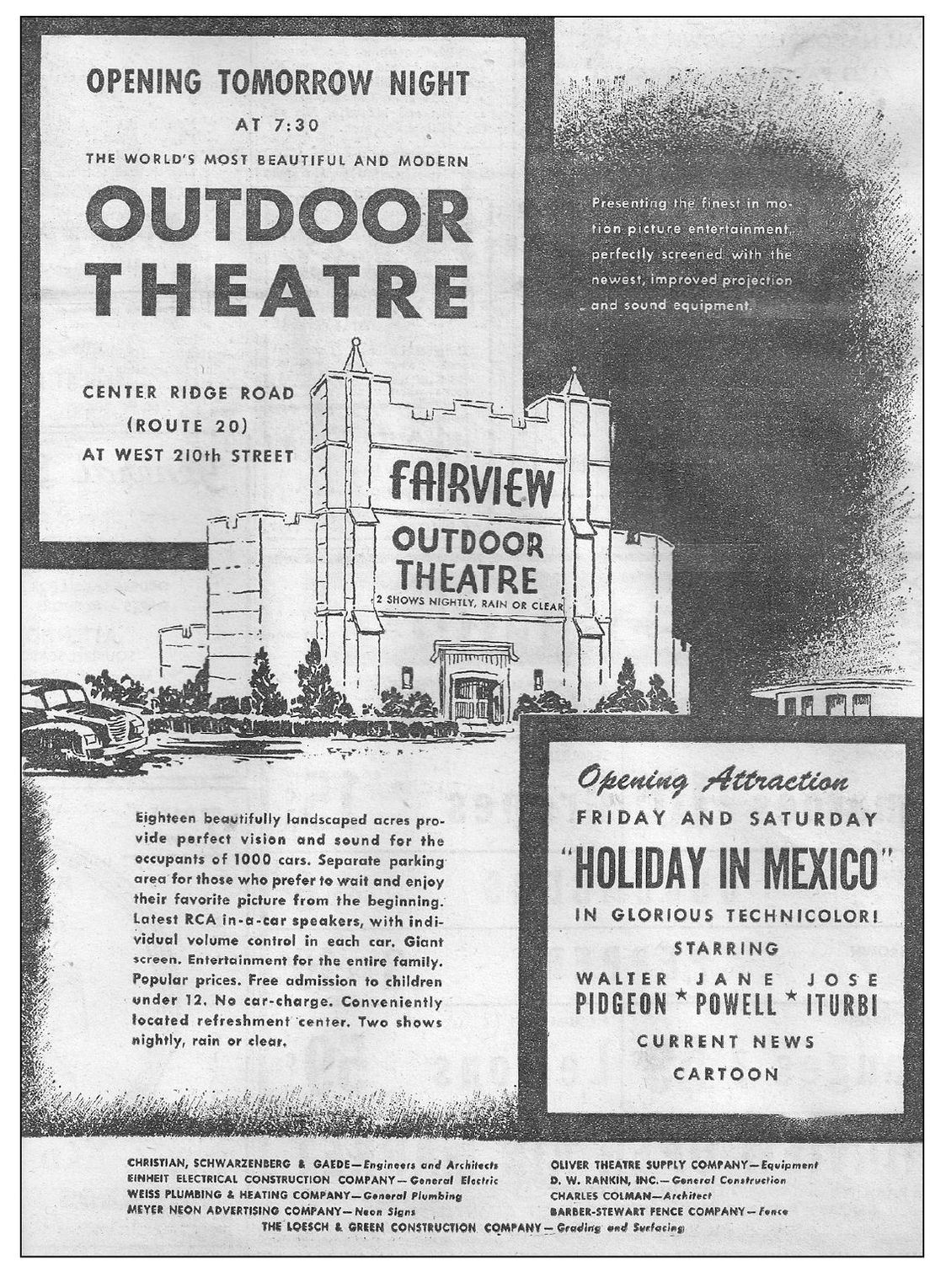
This movie advertisement is from the old Fairview Herald in 1947. Just six years later, Westgate Shopping Center opened here and was redeveloped a couple more times over the next 50 years. (Fairview Park Historical Society.)
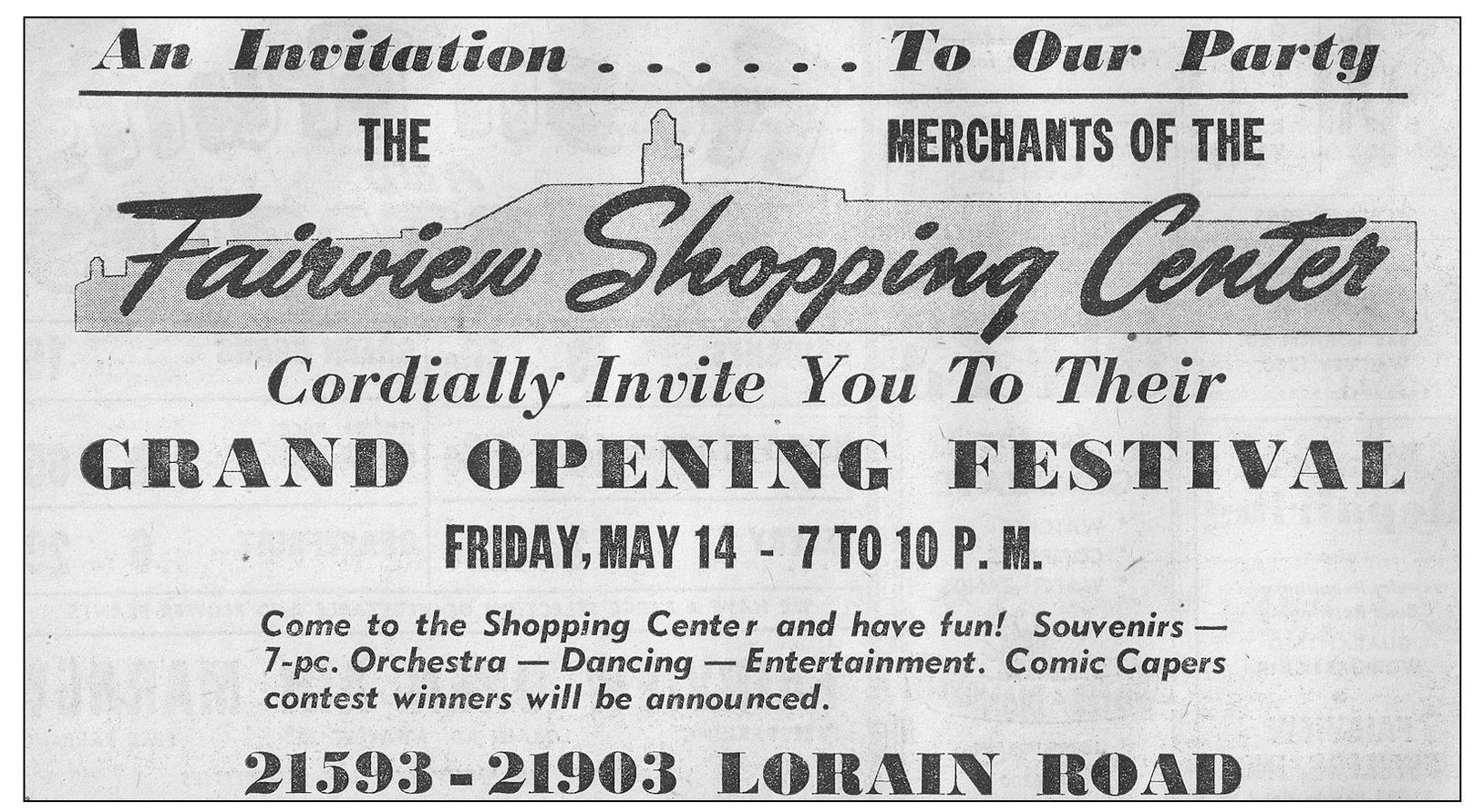
One could say this evolving suburb helped establish the fact that shopping centers and suburbia tend to go together. In the fall of 1947, the Fairview Shopping Center became the first of its kind in Cuyahoga County. It was built on the former property of Willis Potter, the last of the many farms on Lorain Road. With such a major development, the village became the city of Fairview Park in 1950. Many years later, when half the shopping area was rebuilt in the 1990s, it evolved yet again to become Fairview Centre, complete with French spelling. This image is from the Fairview Herald. (Fairview Park Historical Society.)

Gradually the shopping center started opening one store at a time before the movie theater was complete. This theater opened at Thanksgiving in 1947, becoming the first area theater to open since West Park’s Riverside Theater in 1938. It was over 20 years before Westgate opened a movie theater. It was built about where the Potter farmhouse used to stand before the house was moved to the rear of the property where Hillsdale Avenue now runs. When the theater was torn down in the 1990s, the letter F, which had been atop the theater marquee, was reinstalled above the middle of the shopping center. (Fairview Park Historical Society.)
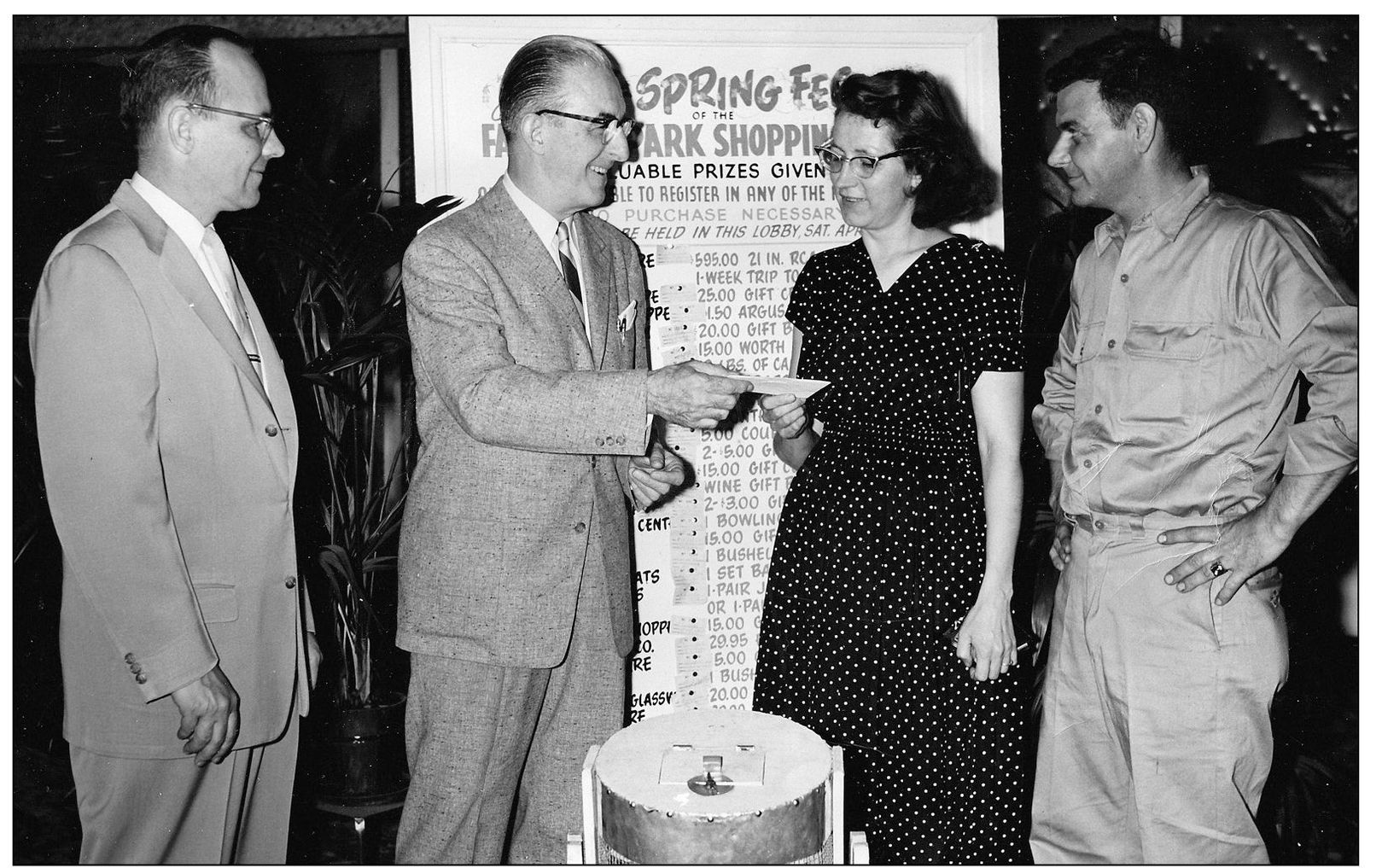
In the early days of the Fairview Theater, Wednesday nights were usually called Bank Night, where adults could put their name in a large drum to be drawn for cash prizes. The names stayed in the drum forever, so a name could be drawn any week, but one had to be present to win. (Fairview Park Historical Society.)
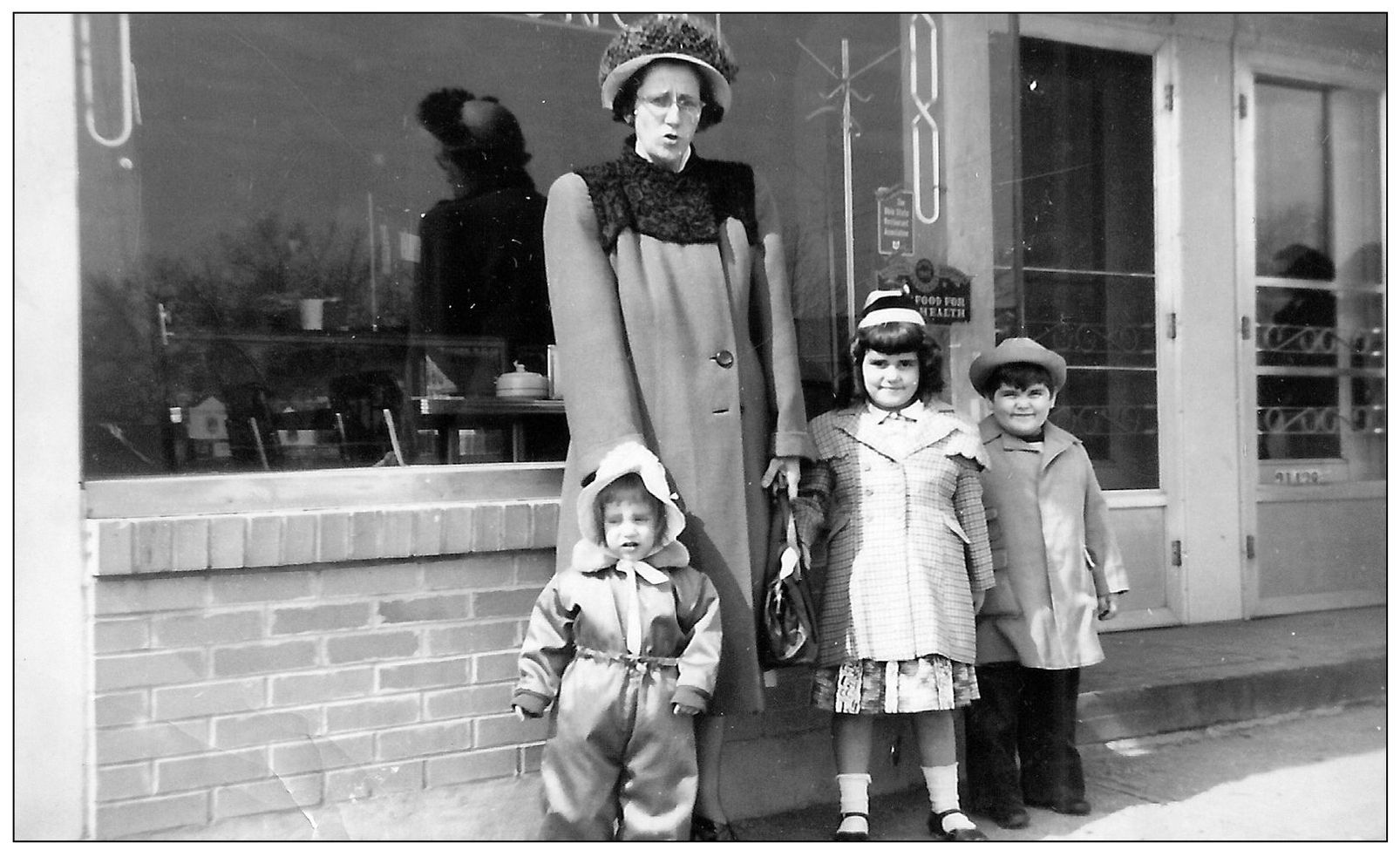
Steve and Mildred Lakios, pictured here with their children in the mid-1950s, opened Stevens Lunch at 21438 Lorain Road in May 1946. In addition to good food, it prospered because of its location. Being on Route 10 near a new shopping center, it brought more business than expected. Although they sold the restaurant in 1957, the truck traffic increased in 1955 with the Ohio Turnpike opening several miles down Lorain Road. (Joy Gdovin.)
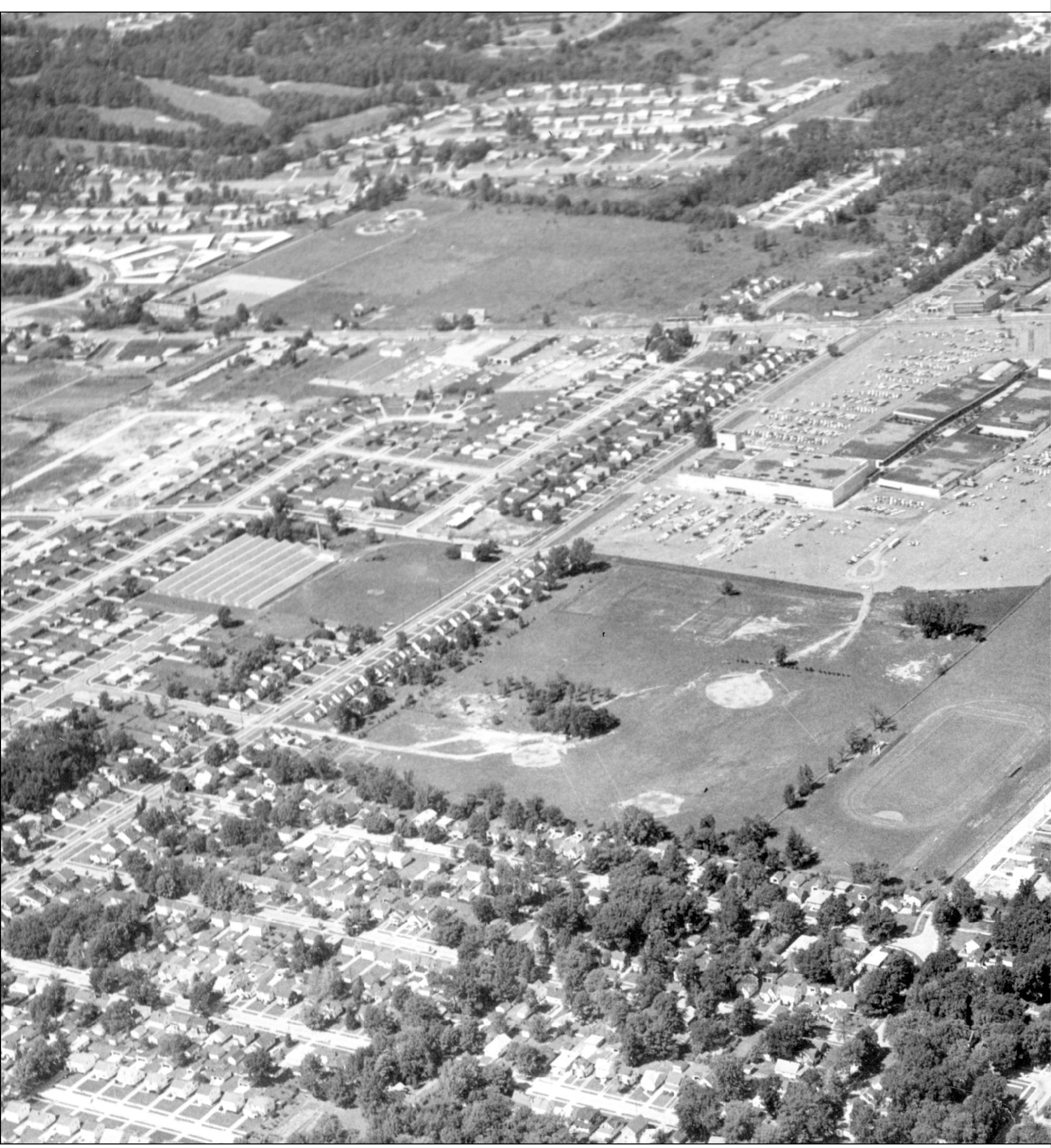
Taken soon after Westgate Shopping Center opened in 1953, the rest of the city and southern Rocky River seems to radiate from its core in this photograph. Running horizontally across the top third of the picture is the Fairview/Rocky River border and the easternmost stretch of Center Ridge Road, ending at Wooster Road just beyond the right edge of this picture. A newly developing Bohlken Park is taking shape just below Westgate. In fact, a lot of the dirt

dug up from the Westgate construction was used as fill to make the park usable for its playing fields and playground. As usual, comparing scenes from then and today, all that open land is unfamiliar because it is now the typical suburban stretch of stores and restaurants. (Cleveland Press Archives, Cleveland State University.)
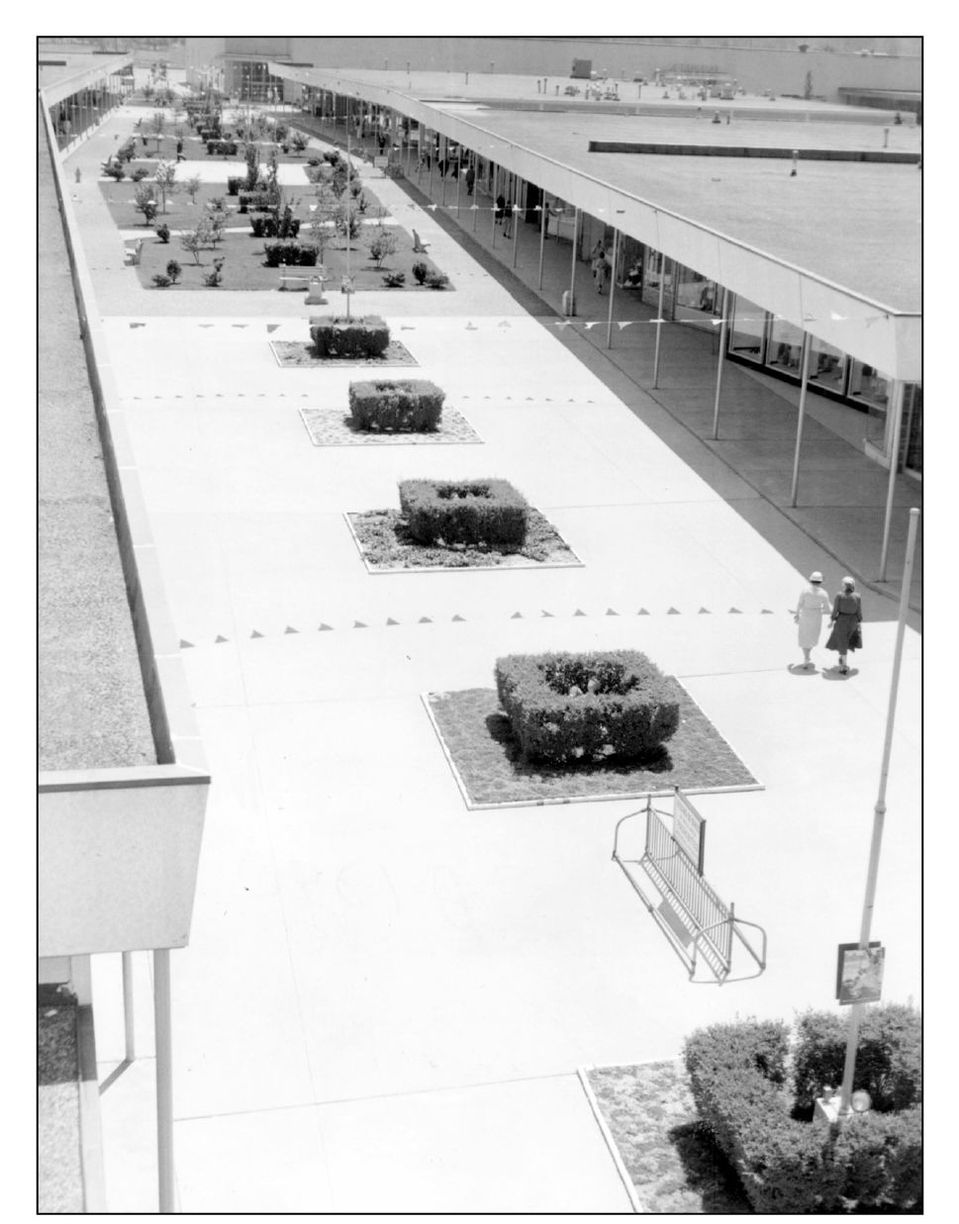
The Fairview Shopping Center had been the first in Cuyahoga County in 1947. Then in 1953, developers built the state’s first open-air landscaped shopping plaza, Westgate. It was essentially a mall without a roof, with strips of stores facing into a landscaped plaza. Westgate Shopping Center has since gone through two other phases, reflecting suburban shopping trends. It was eventually roofed in 1969, making it one of the area’s first enclosed malls. As the 21st century began, the outdoor plaza once again became popular. Westgate was torn down and redeveloped back into an outdoor plaza in 2007. (Cleveland Press Archives, Cleveland State University.)
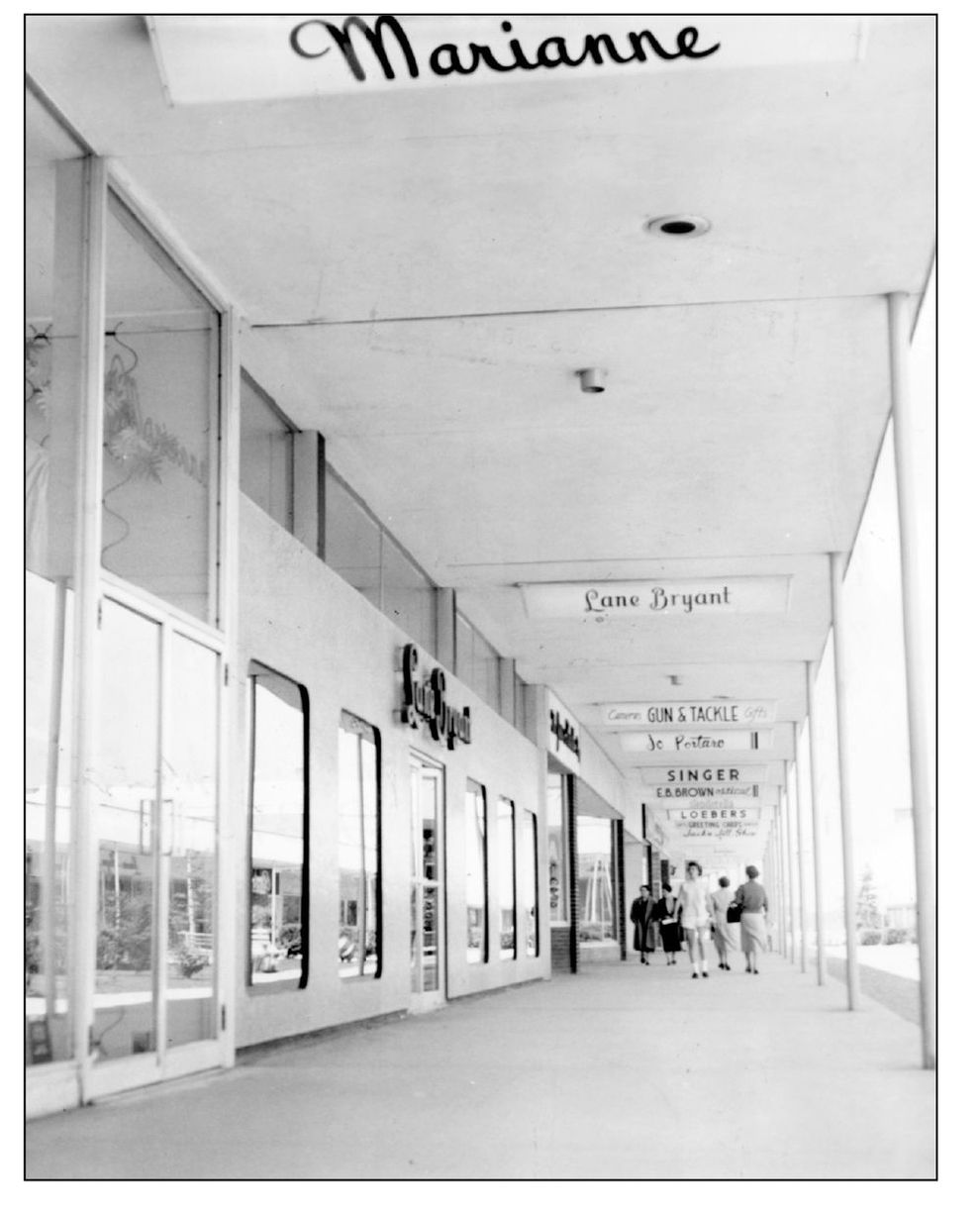
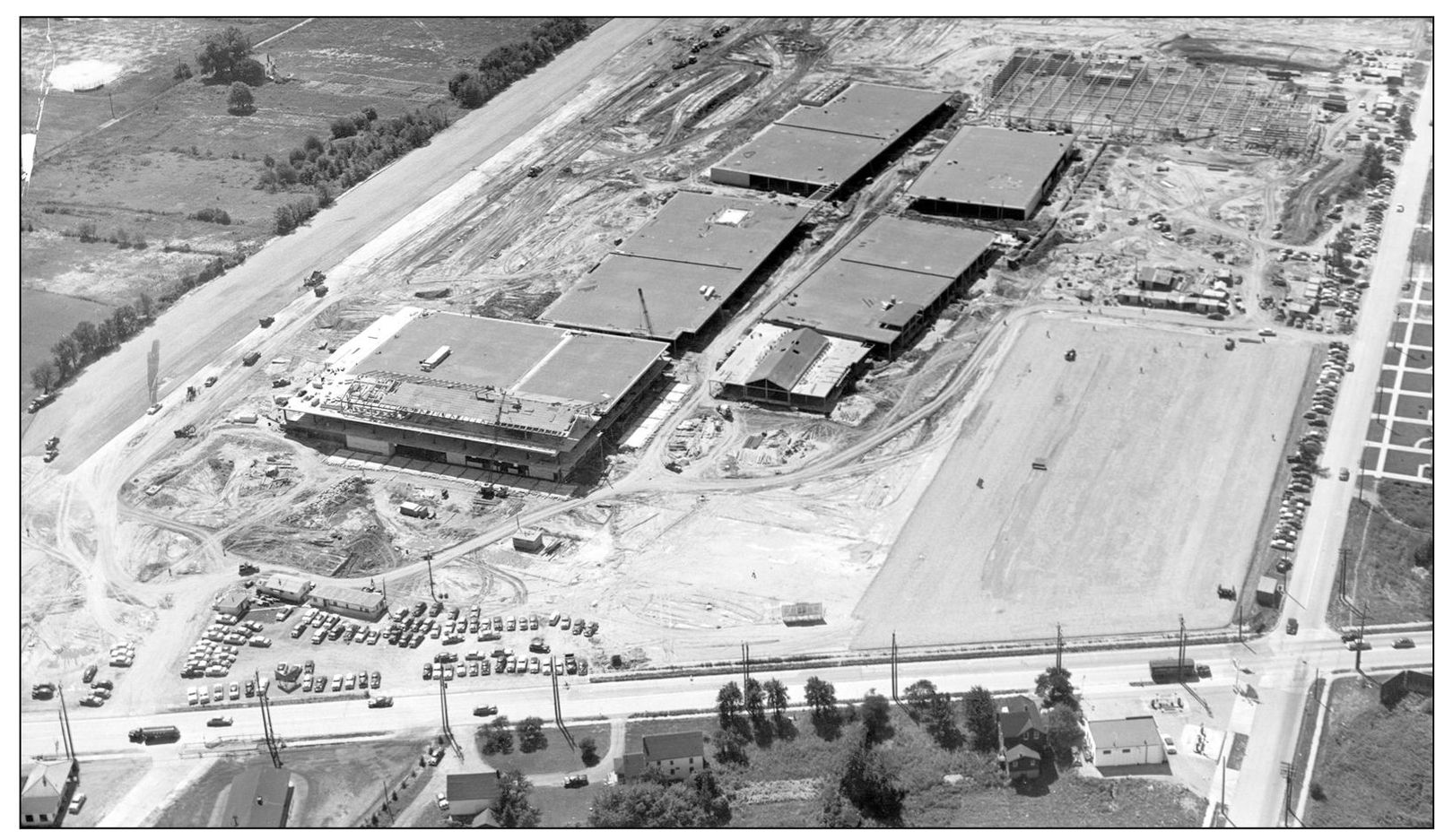
Looking like some nondescript rectangles, the original Westgate Shopping Center begins to take shape. (Cleveland Press Archives, Cleveland State University.)
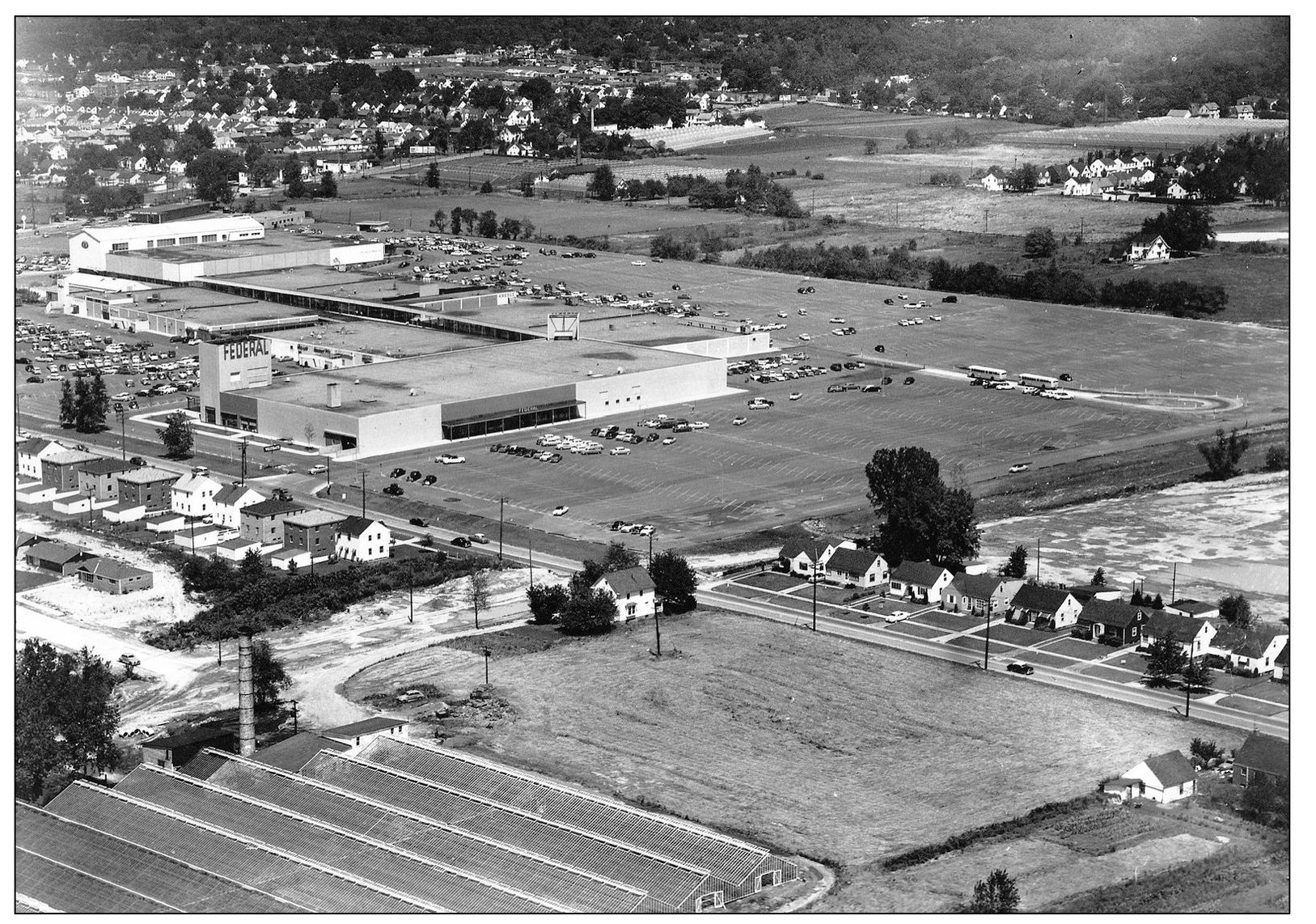
This mid-1950s view not only shows all the land yet to be developed east of Westgate Shopping Center in the upper half of the picture but also the greenhouses, lower left corner, that were there before the Addington Place condominiums were built on the site. Greenhouses were very common throughout the area long after the farms were gone. (Fairview Park Historical Society.)
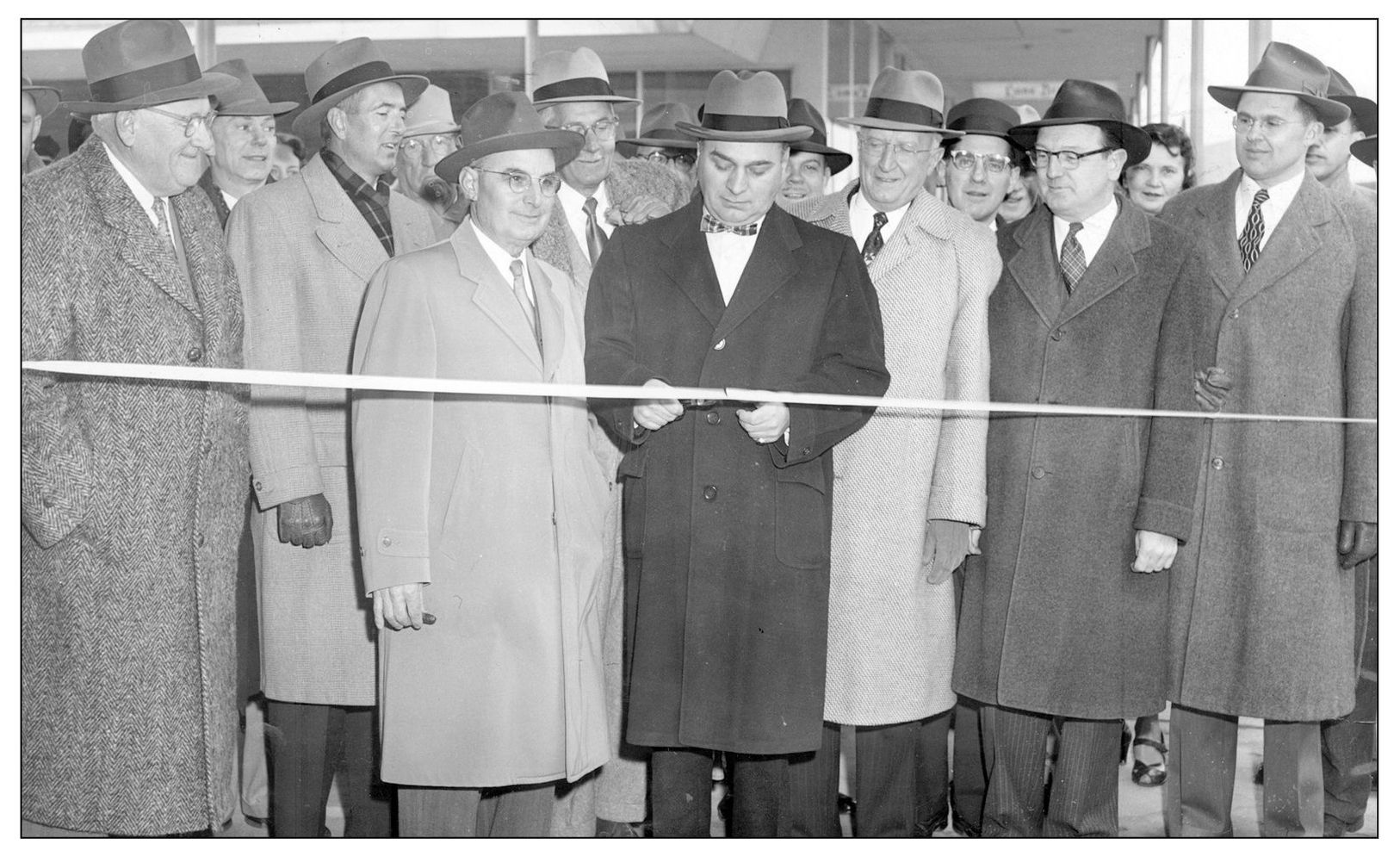
County commissioner Henry W. Speeth cuts the ribbon to open up the $10 million Westgate Shopping Center in 1954. Flanking him from left to right are Mayor Karl A. Bohlken, the three developers of the project, the president of the project’s builders, the head of the new Westgate Merchants Association, and the representative of the insurance company. (Cleveland Press Archives, Cleveland State University.)
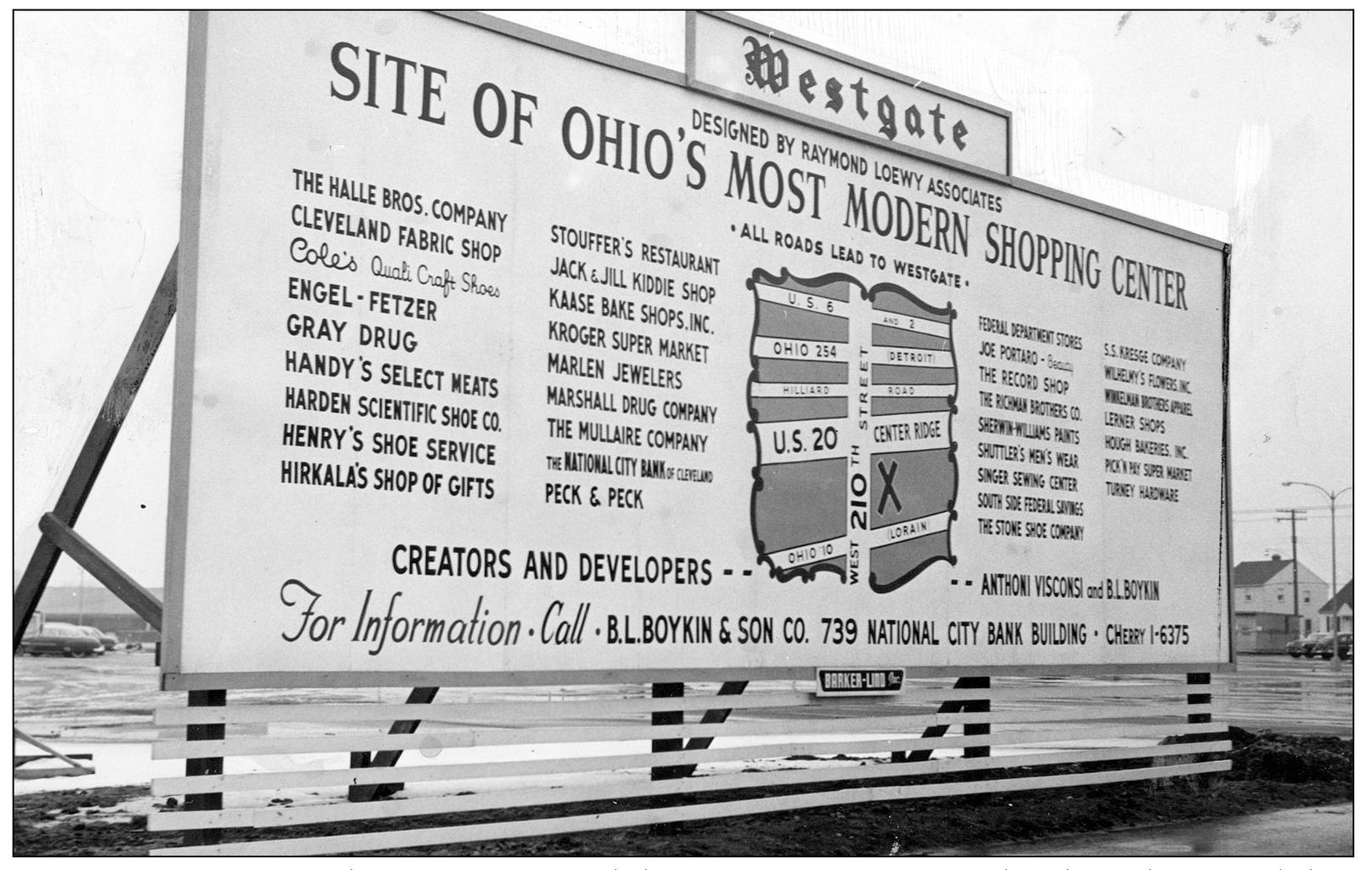
A sign for Fairview Park’s newest accomplishment in January 1954 also shows how much has changed since then. So many of those stores listed are no longer in business. By 2007, Westgate Shopping Center came full circle, being completely torn down and redeveloped as a modern open-air complex of stores. (Cleveland Press Archives, Cleveland State University.)
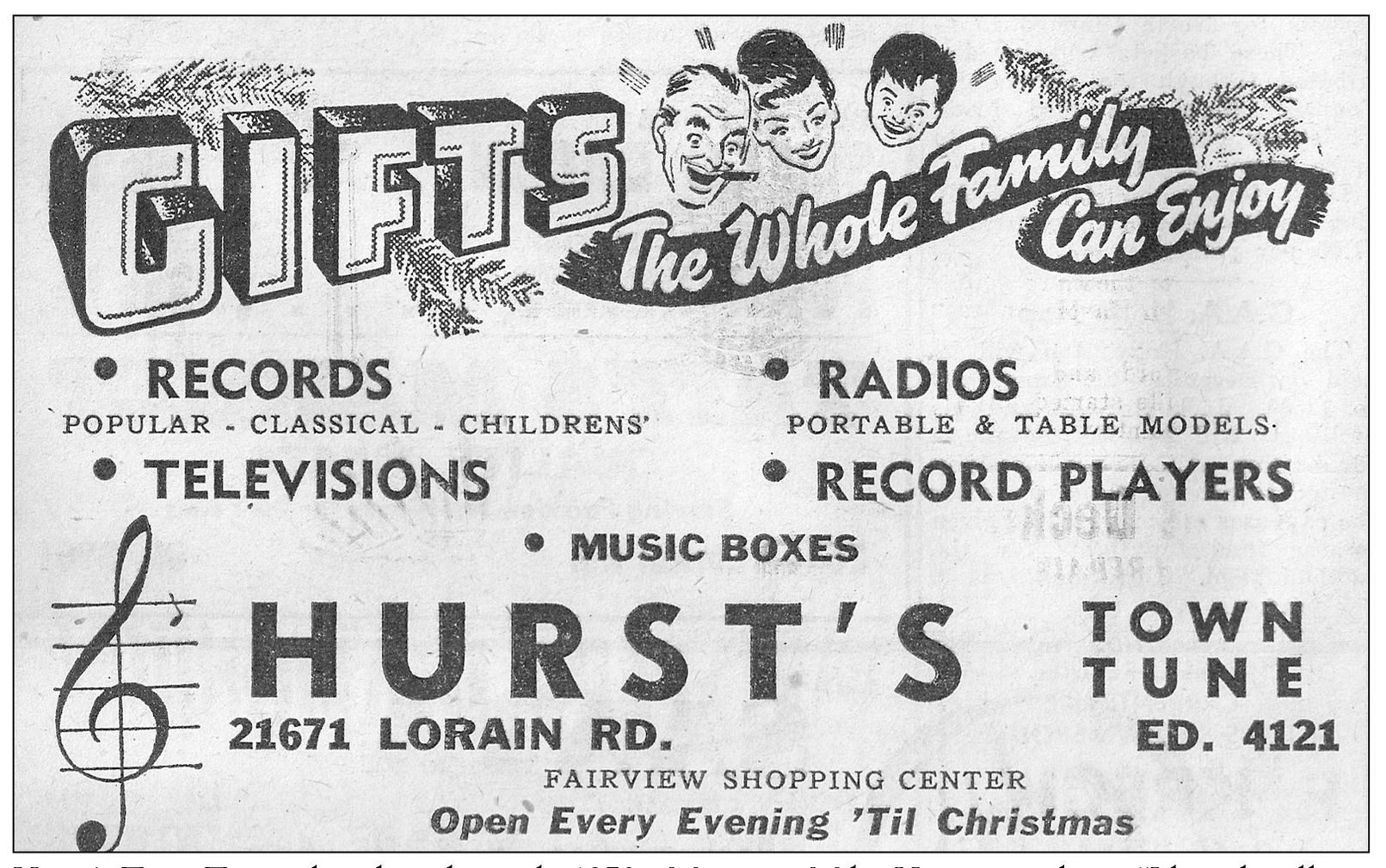
Hurst’s Tune Town closed in the early 1970s. Musician Mike Hay remembers, “I bought all my records from Hurst. I was in a local band in the early 60s called the TreeStumps. A new Bob Dylan record would be on the radio and the TreeStumps would be playing it the next week. Hurst Tune Town was my virtual link to the music world.” This image is from the Fairview Herald. (Fairview Park Historical Society.)
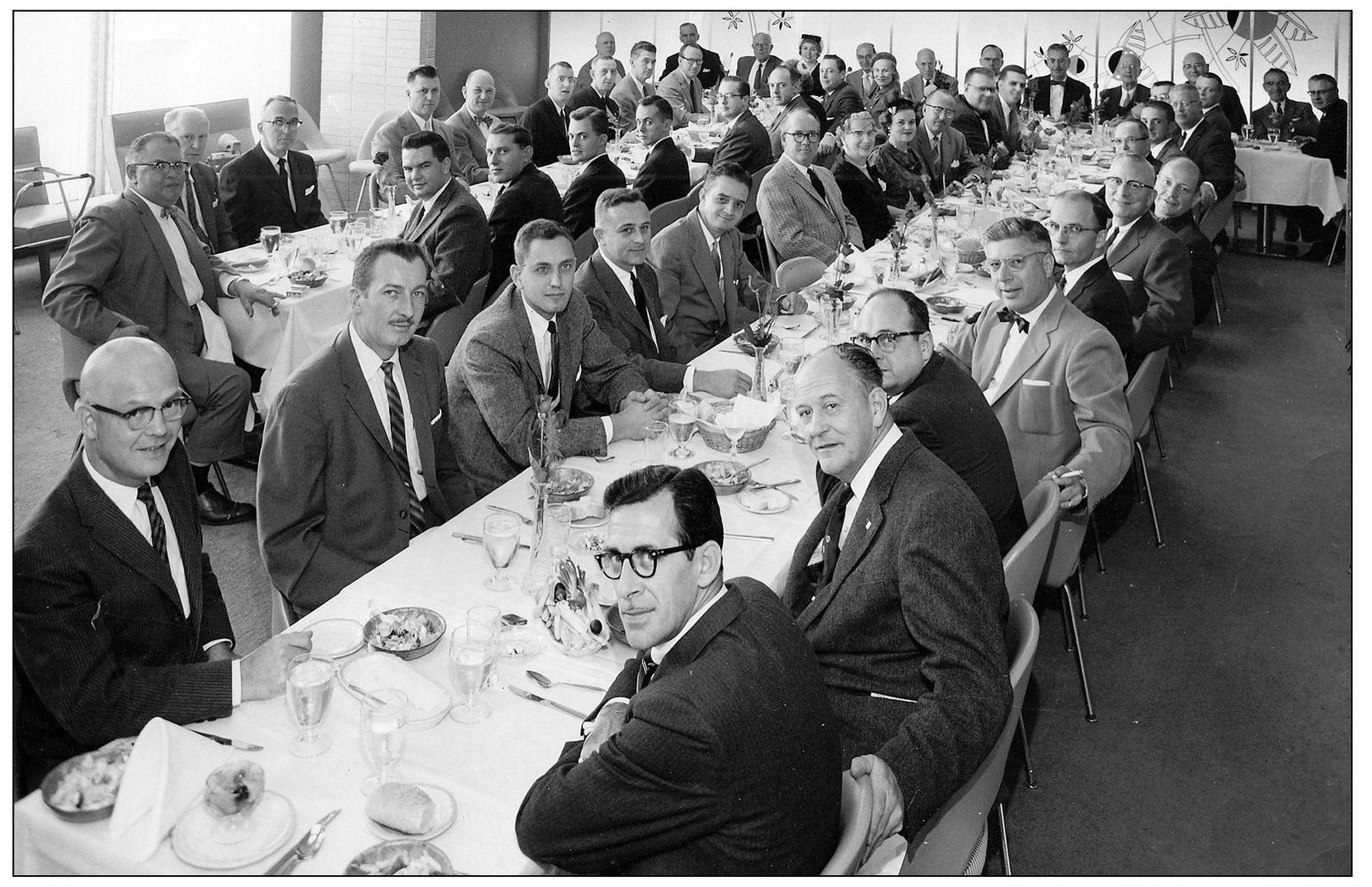
Pictured is a luncheon at the long-gone Chung’s Restaurant after the new Society Bank branch was opened on October 6, 1958. School superintendent Lewis F. Mayer sits at the lower left. (Fairview Park Historical Society.)
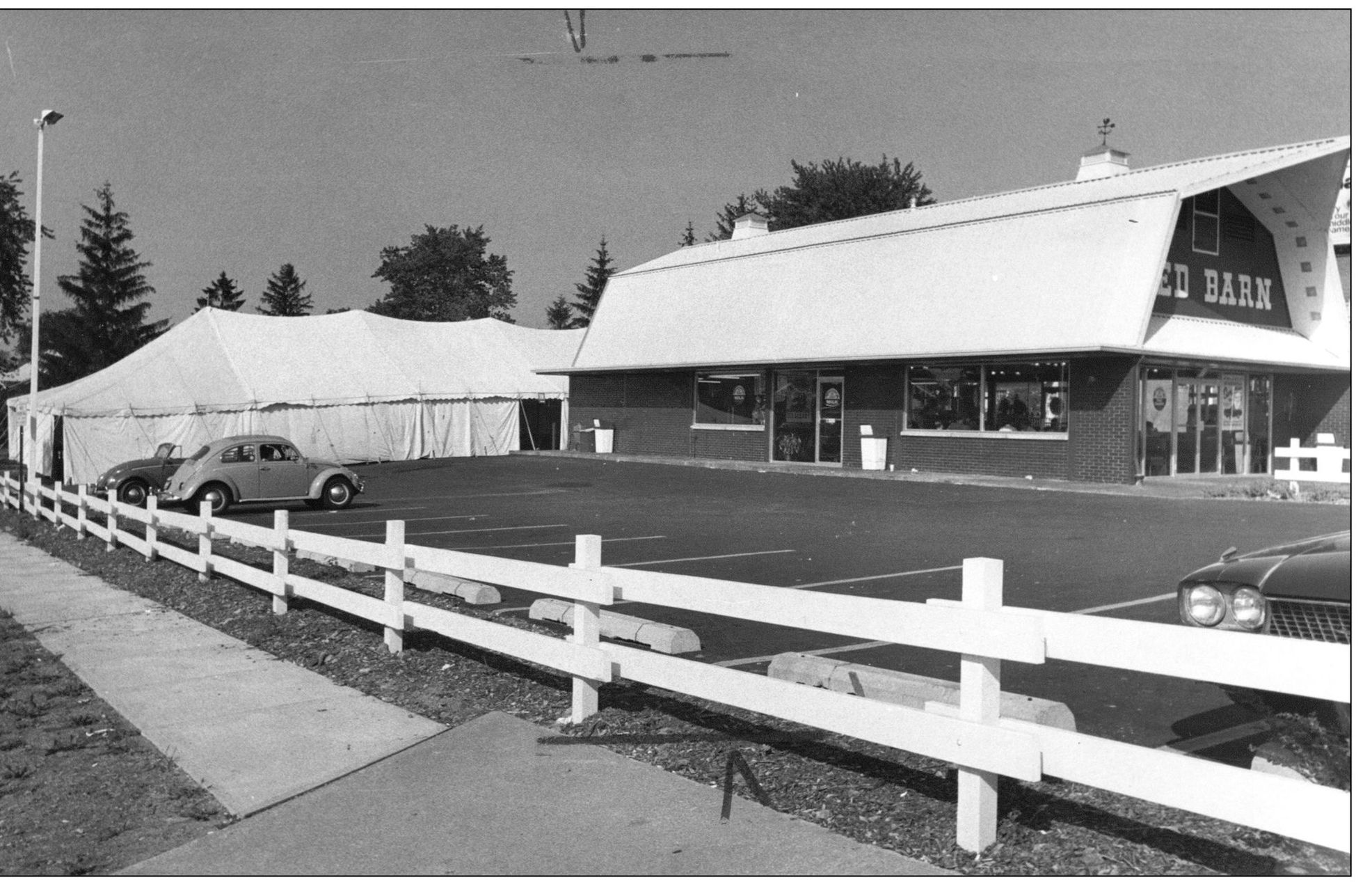
This is not just a popular Fairview Park fast-food restaurant that used to be across from Ohliger Drug Store at West 217th Street and Lorain Road. Although the whole chain of Red Barns went out of business, their barn-shaped buildings continued to be recognizable throughout Greater Cleveland as various other restaurants utilized the buildings. When this picture was taken, the tent in the back was controversial. Since the nearby high school cafeteria was being enlarged, the Red Barn anticipated increased business, and the 40-foot-by-100-foot tent could hold 600 people. But the city took the restaurant to court, saying it was against zoning and fire-prevention codes. (Cleveland Public Library.)
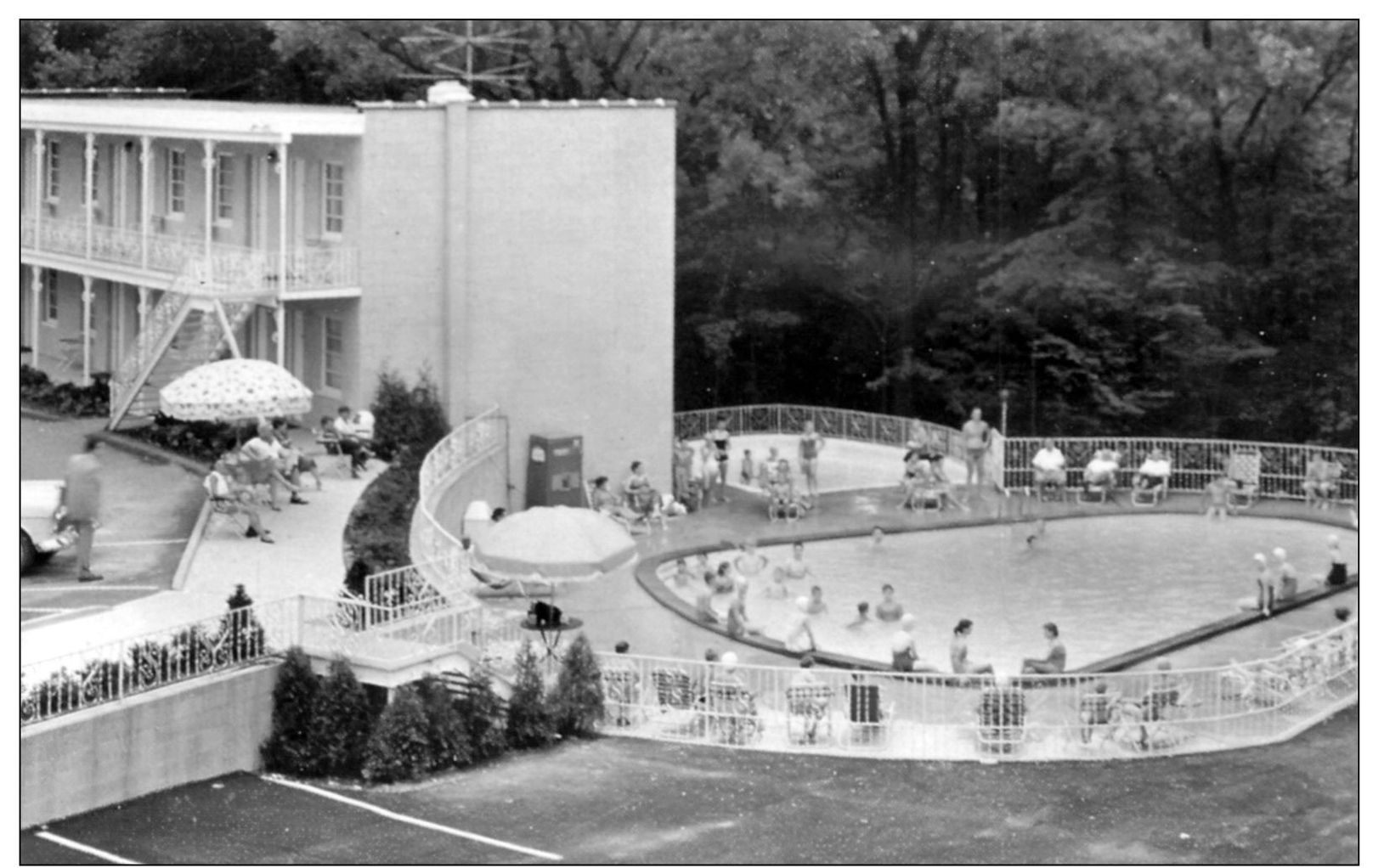
Some photographs document subtle changes, such as a building that has been replaced by another. Then there are the more extreme changes like the long-gone Valley View Motel along Lorain Road, complete with a swimming pool alongside the Rocky River Reservation of the Cleveland Metroparks. (Gordon Kramp postcard collection.)
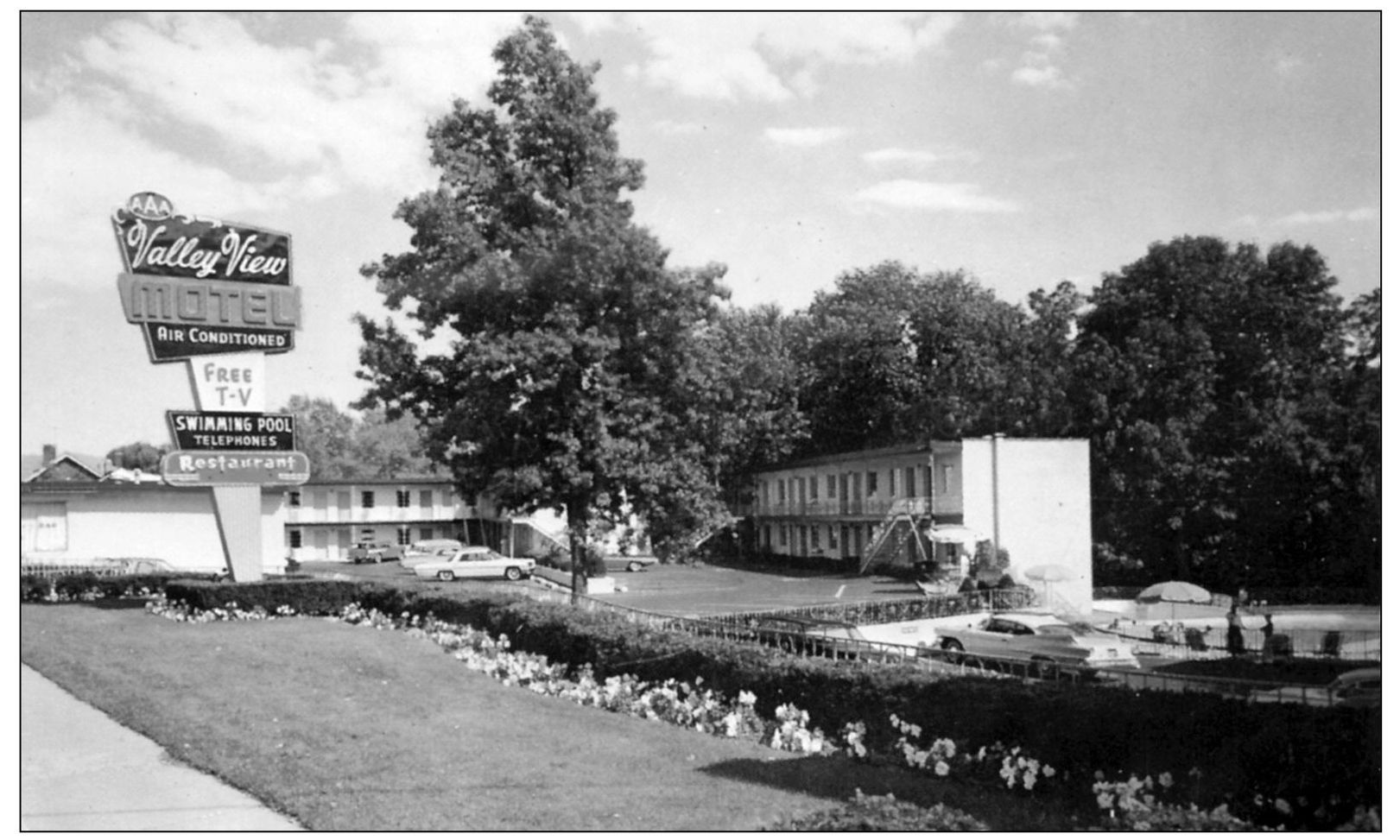
Route 10 (Lorain Road) used to get a lot of the cross-country traffic before the interstates of the 1960s and 1970s arrived. Travelers could stop and stay the night at motels like the Valley View. The main building prospered for a few short years in the 1990s as one of the finest Indian restaurants in Greater Cleveland, the Clay Oven, before it was torn down. (Gordon Kramp postcard collection.)
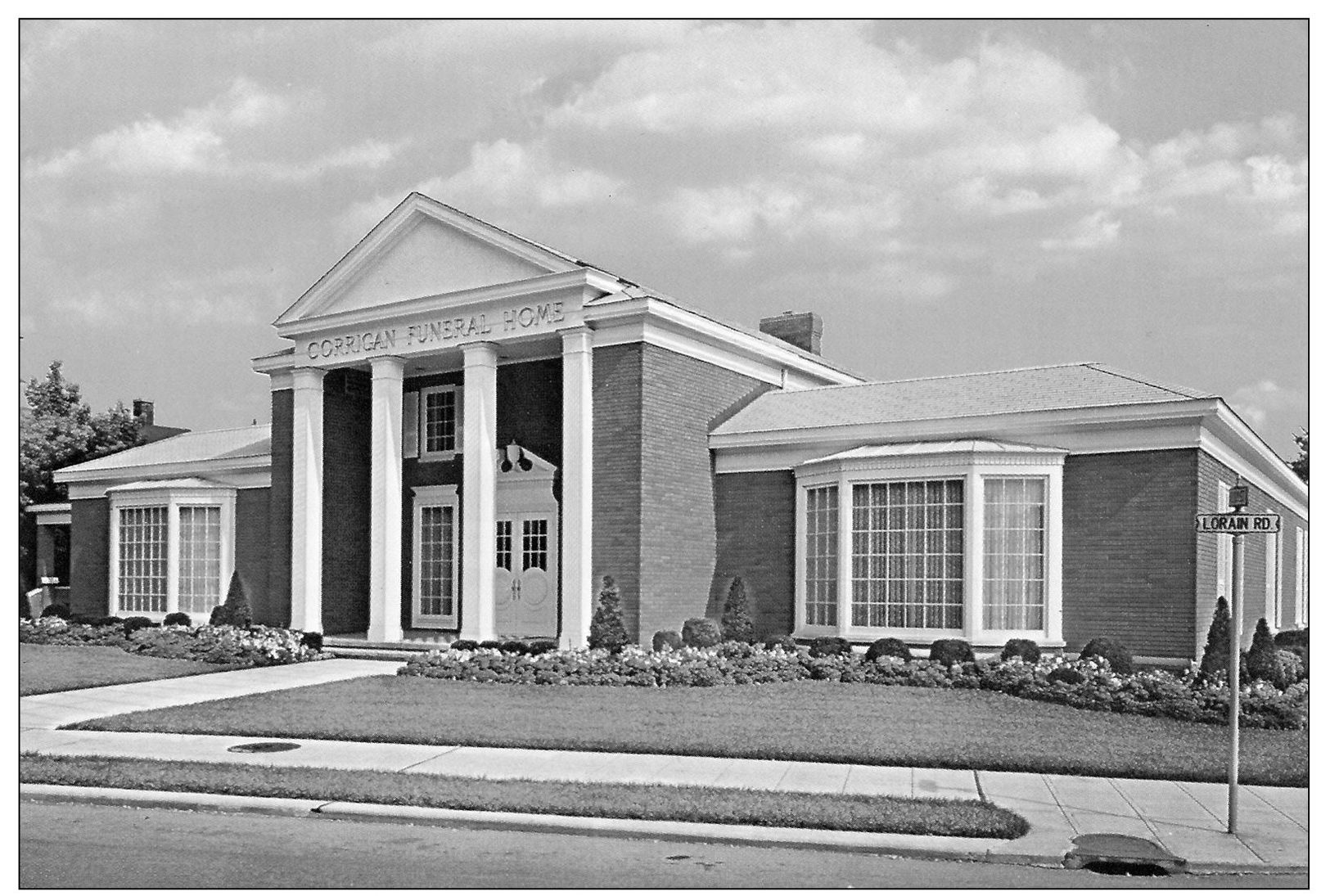
The classical exterior of Corrigan Funeral Home’s new building was a striking addition to Lorain Road, another bold step away from the farmland of recent decades. (Gordon Kramp postcard collection.)
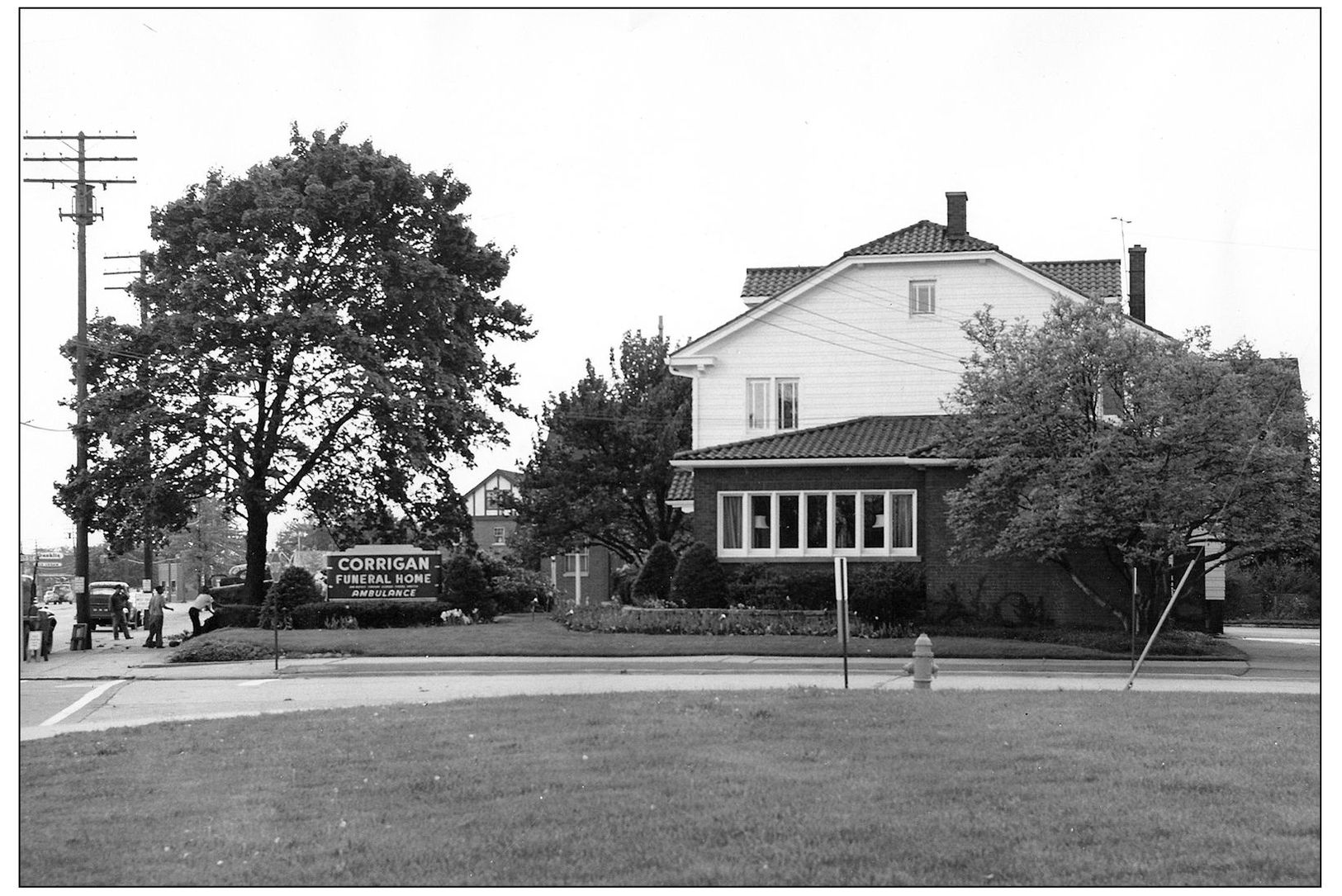
This is Corrigan Funeral Home before it was rebuilt in the 1960s. (Fairview Park Historical Society.)
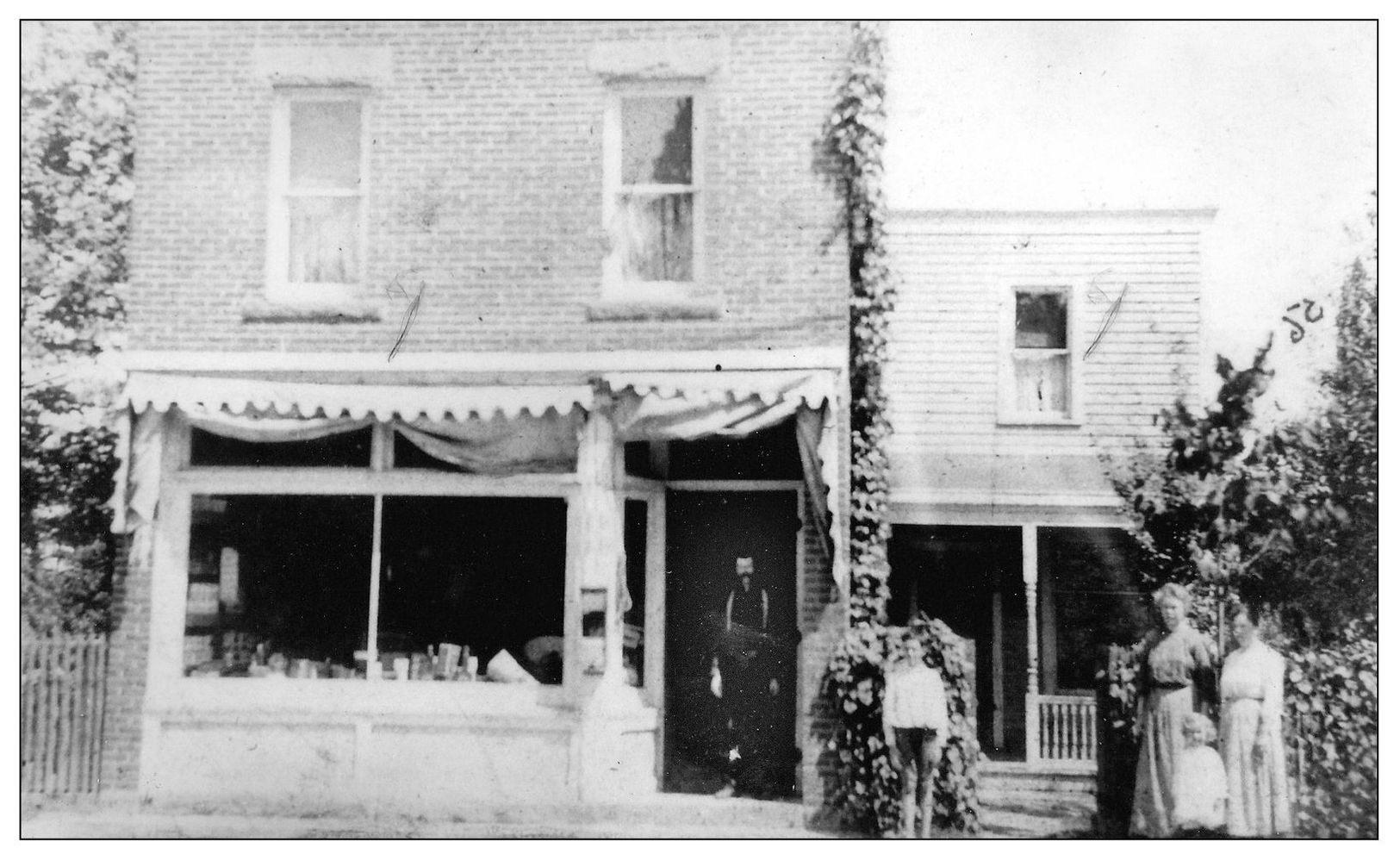
Nick Gilles stands in the doorway of his grocery store, the first in Fairview, at the northwest corner of the Lorain Road bridge. More people remember the second-oldest grocery, the Pantry, because it operated into the 1960s. Gilles was the village treasurer for the first 21 years. His son Fred, center, died in World War I. The Gilles-Sweet School was named after him. This building is now a bed-and-breakfast. (Fairview Park Historical Society.)

This photograph is from early 1961. It has not changed too much from this original look, although in later years, that slab on the front edge of the roof was removed, and more decorative material was added above the awning. Not only was Ohliger Drug Store on friendly terms with its competitor, Pierstorf’s, just a few blocks away, but it also was among the few successful independent drugstores up against the huge chain stores. (Tom Ohliger.)
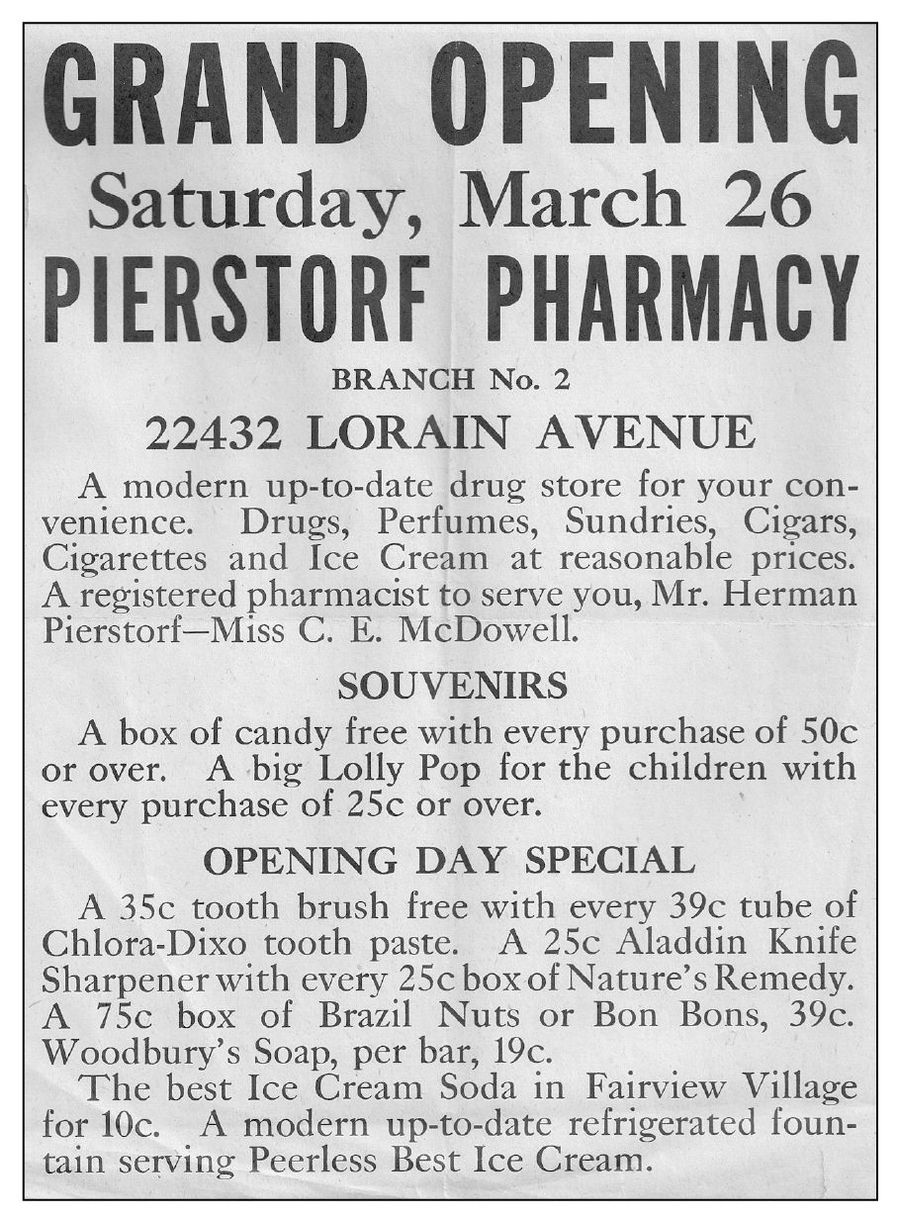
A longtime familiar sight near West 220th Street and Lorain Road, Pierstorf’s original location in 1927 was a few blocks to the west. It was started by Herman Pierstorf. (Fairview Park Historical Society.)
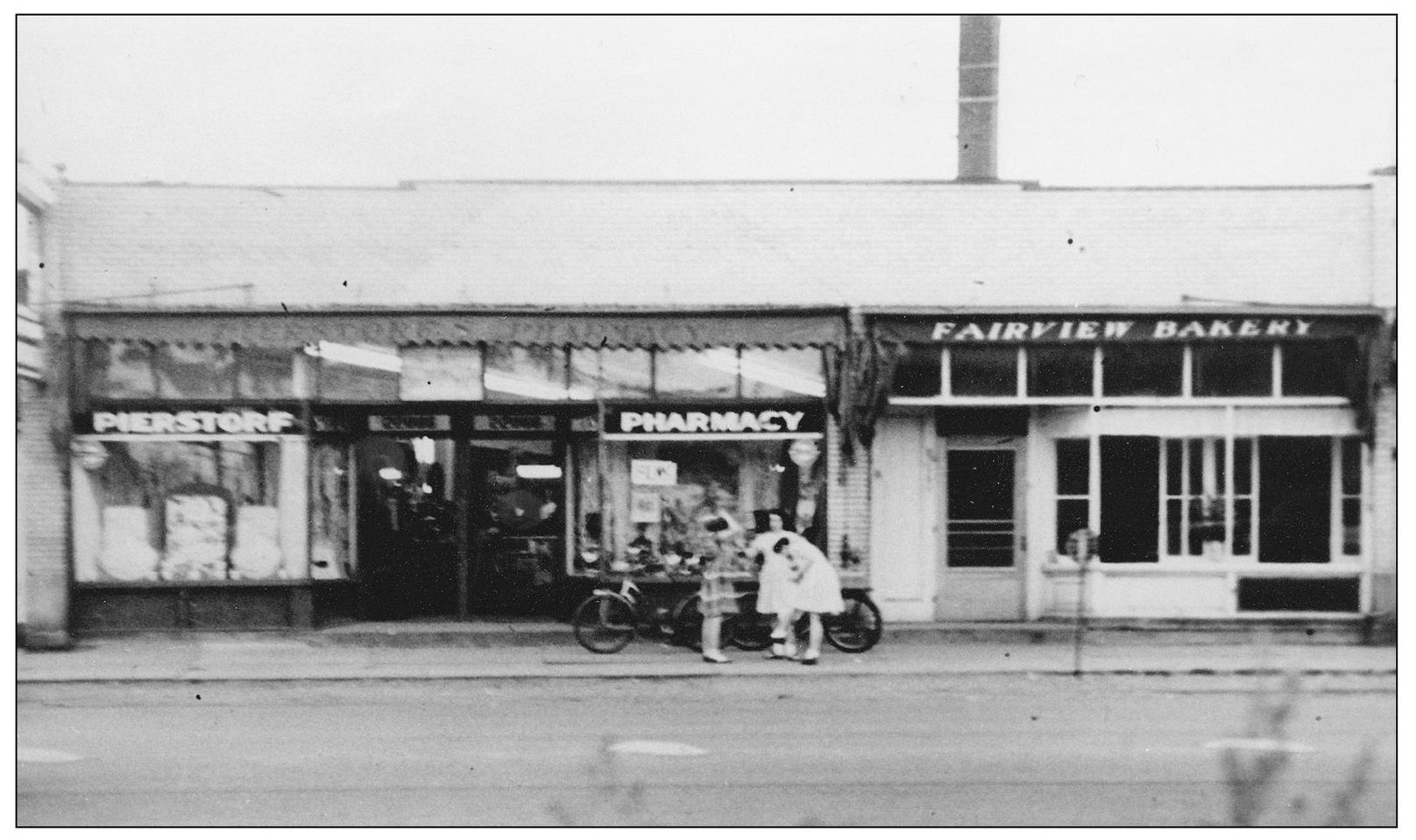
Pierstorf brothers Clarence and Ervin started Fairview Photo Service in the early days by developing film themselves in the pharmacy basement after hours. In those days, Kodak focused all its retailing in pharmacies, but the driver who picked up film from the Pierstorfs for developing thought it was too long a drive out of Cleveland, so the Pierstorfs bought their own equipment and started a very successful business. (Fairview Park Historical Society.)
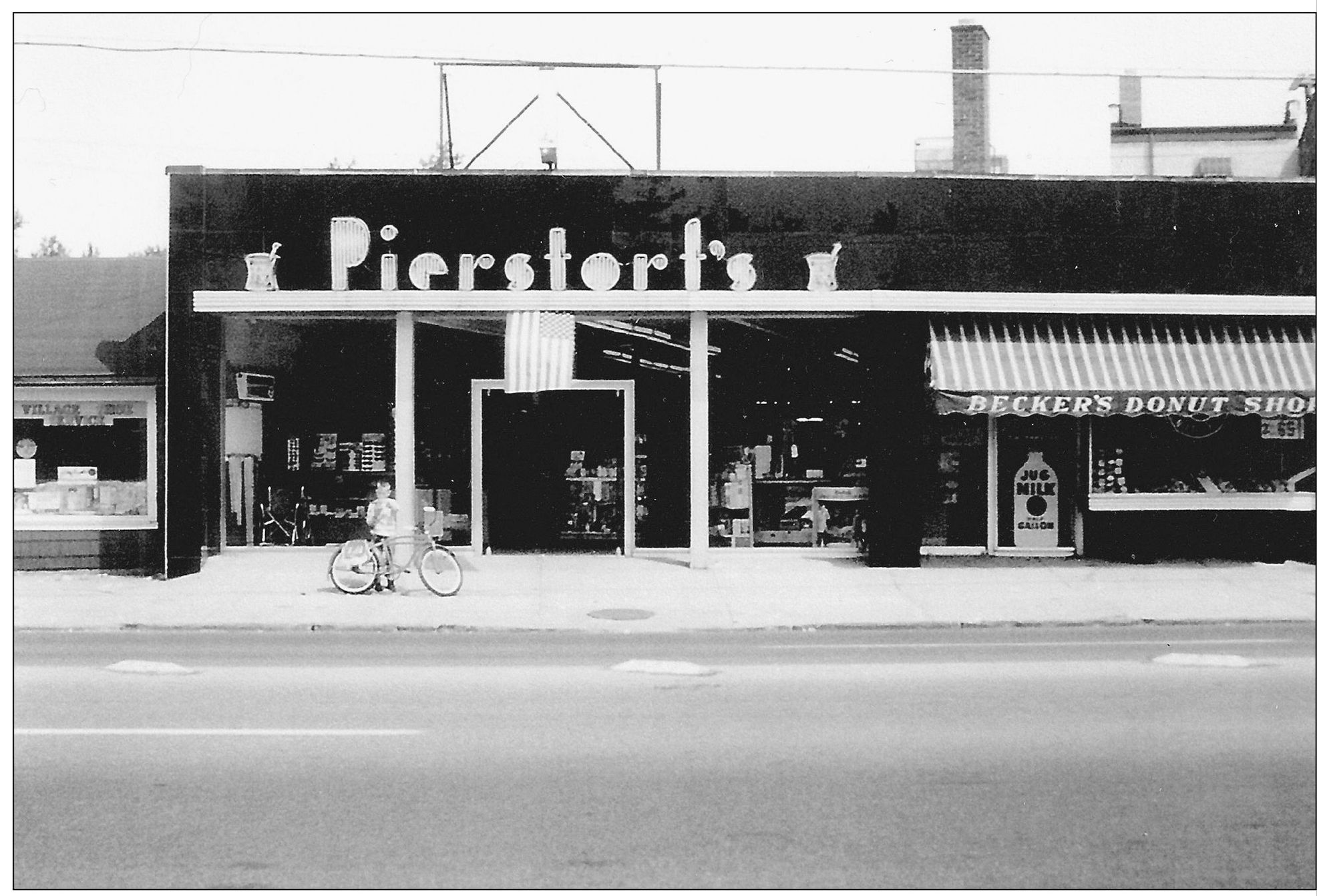
Not only was Pierstorf’s the first pharmacy in the area with air conditioning, but it also had a distinctive storefront of black carrera glass, and it was the first pharmacy with full-drop windows. And the sign, consisting of the name Pierstorf’s and a pharmacist’s mortar and pestle formed in stainless steel, was the only one of its kind. The manufacturer had to tell the Pierstorf brothers to quit referring customers to them who wanted a similar sign because it was too hard to try making again. Pierstorf’s closed in 1993 after 66 years in business. It was the longest continually open business in Fairview Park. Ervin and Clarence Pierstorf ran it from 1927 to 1975, at which point Bill Hall ran it 18 more years. (Ervin Pierstorf.)
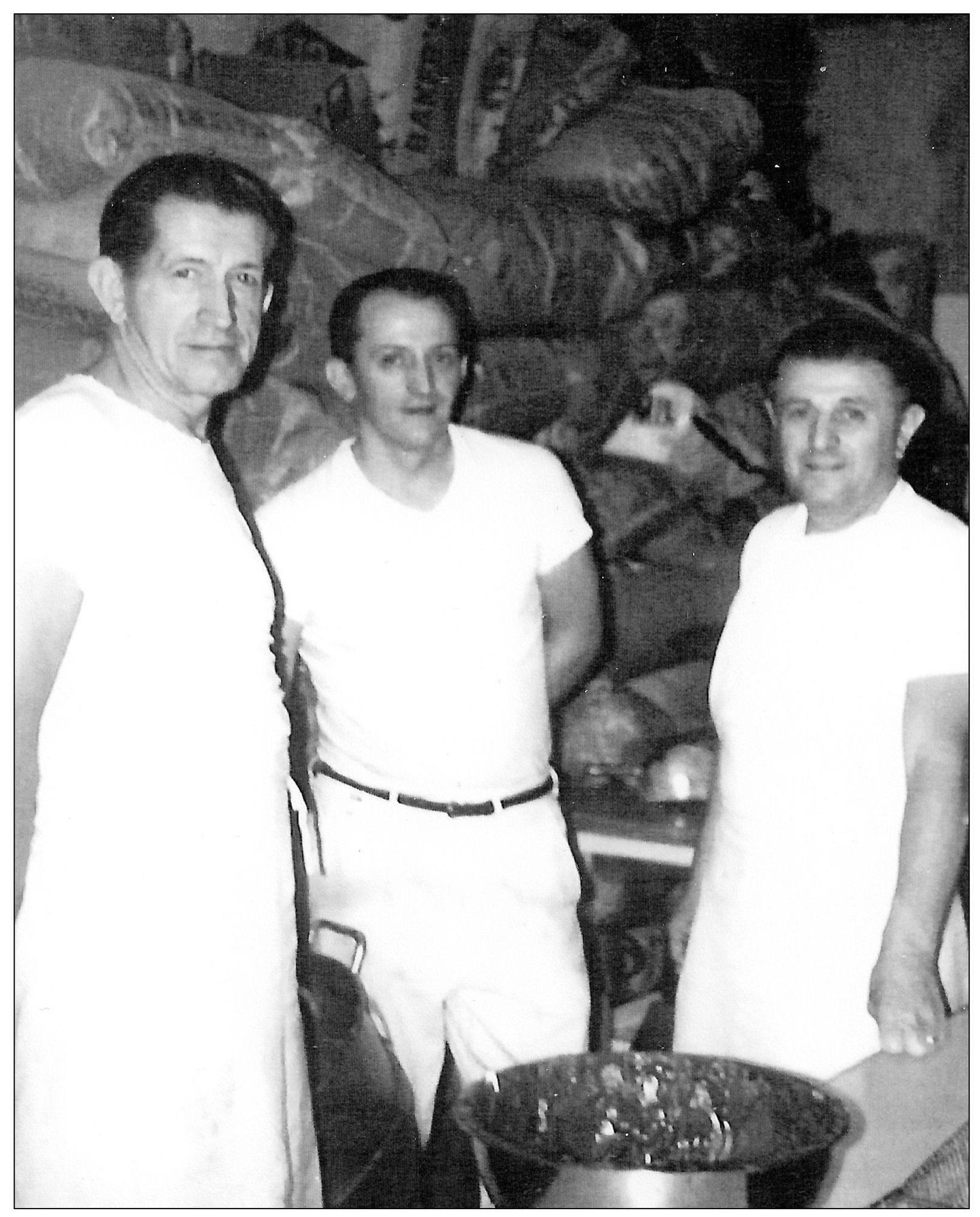
Beckers Donut Shop has a long but broken history. It originally operated from 1957 to 1988 next to Pierstorf’s pharmacy. Then it merged with a bakery on the east side of Cleveland. But after about 10 years, it was able to move back into the old space as if it never left. Here Becker brothers, from left to right, Louie, Bob (owner), and Bill pose before bags of all-important flour and sugar. Fairview Photo used the storefront for a few years, and in 2006, Beckers returned with the same phone number it used to have. (Tom Becker.)
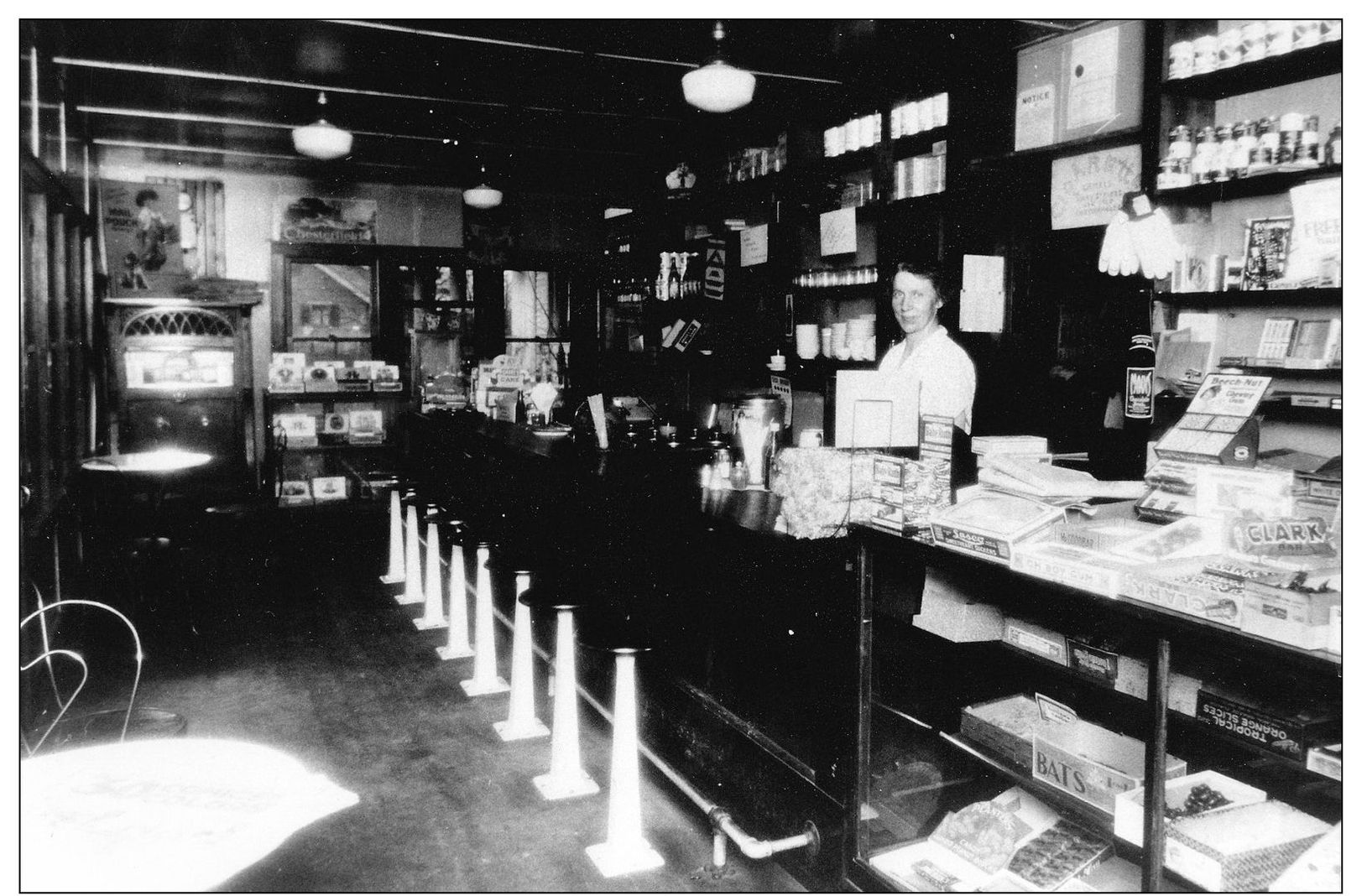
One of the oldest-standing buildings in Fairview, Midnite Barbecue later became Alma’s and then Gina’s Place. Esther Hogstram stands behind the counter. It is said that the day it opened in 1927, Charles Lindbergh landed his airplane in Paris. (Fairview Park Historical Society.)
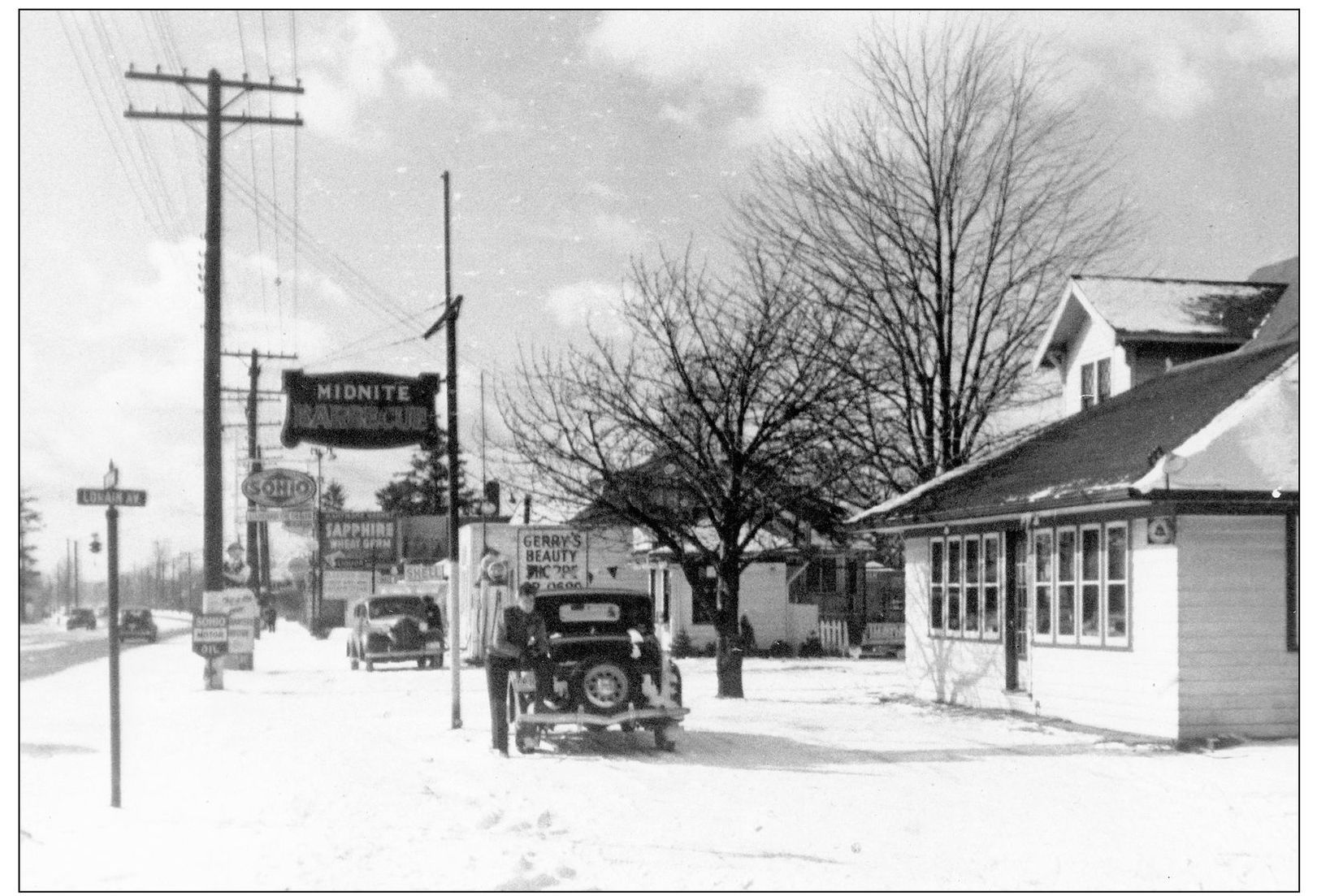
From this angle in the 1930s, the building mostly looked the same over the years through other owners. (Fairview Park Historical Society.)
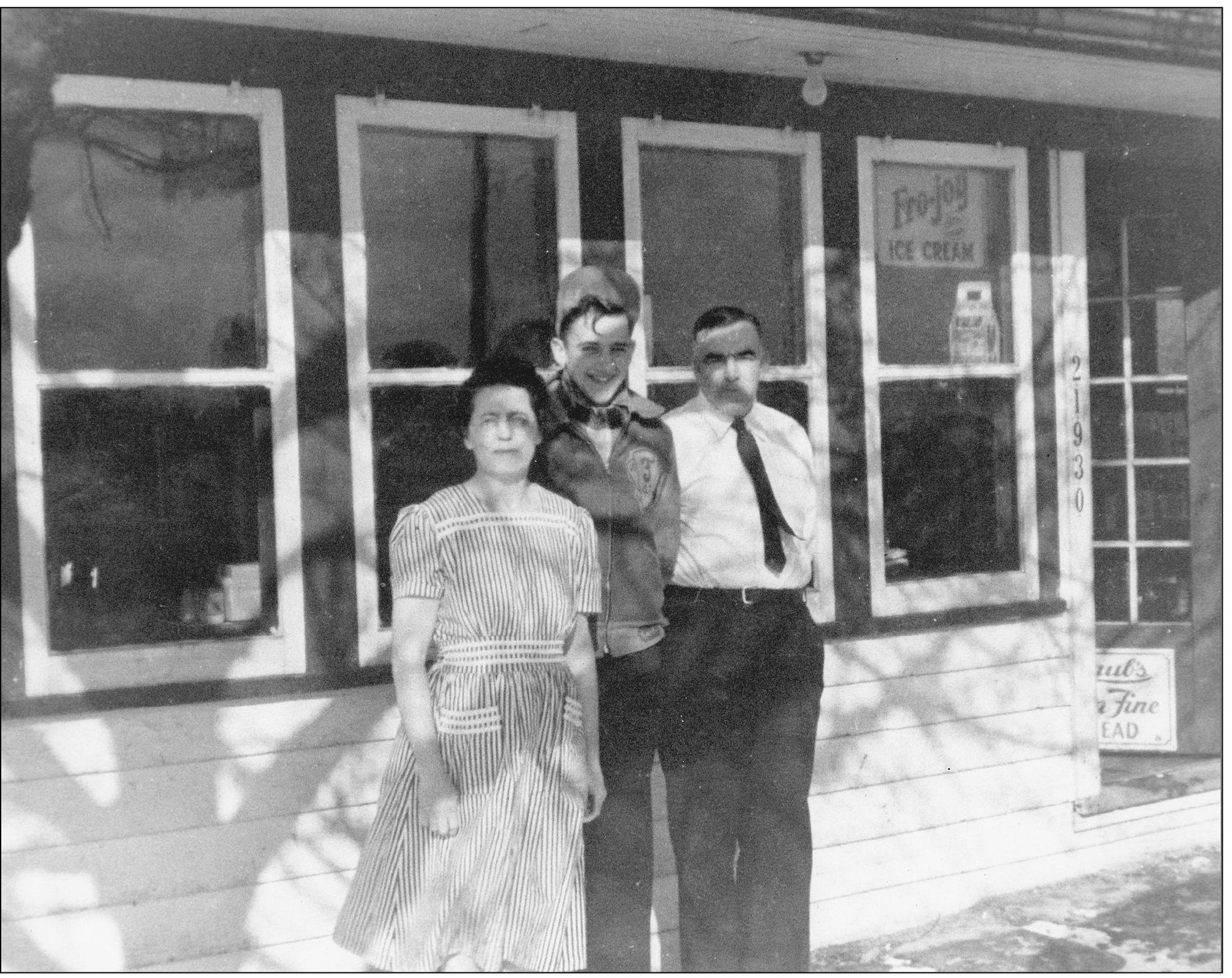
Amelia and Walter Thomson ran Midnite Barbecue at the easternmost edge of the original Spencer land. Amelia was a Spencer, and this land was her wedding gift. The young man standing in between Amelia and Walter around 1941 is Joe Mayer, who later became a radio personality in Cleveland. (Fairview Park Historical Society.)